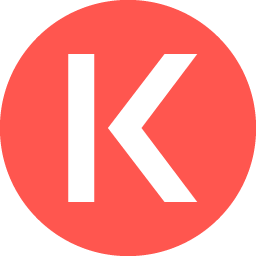







































BlockDAG Keynote 3: Why BlockDAG, Bitcoin, and Render Network Are Shaping Web3 Scalability
 RENDER
RENDER
 BTC
BTC
 BDAG
BDAG
 WHEN
WHEN
 READ
READ
Render Up 7,780%, Bitcoin Worth $1.64T—But BlockDAG’s Keynote 3 Shows Why It's the Real Game-Changer
Scalability isn’t just about speed; it’s about handling real-world demands without breaking a sweat. While Bitcoin introduced blockchain to the world and became synonymous with digital gold, its linear transaction processing model limits scalability. Render Network, on the other hand, has revolutionized GPU rendering by decentralizing computational power, yet it too faces constraints inherent in linear chains.
BlockDAG—a revolutionary approach that sidesteps the bottleneck by enabling parallel transaction processing. Unlike traditional blockchains, BlockDAG’s Directed Acyclic Graph structure distributes the workload efficiently, ensuring consistent throughput even under heavy load. This makes it a practical choice for scalable Web3 applications.
Bitcoin: From Genesis to Global Dominance
Bitcoin, launched in 2009 by the enigmatic Satoshi Nakamoto, was the first decentralized cryptocurrency, built on blockchain technology to enable peer-to-peer transactions without intermediaries. Initially worth mere cents, Bitcoin’s value has surged exponentially over the years. Consequently, early adopters who acquired Bitcoin at fractions of a dollar have seen unprecedented returns.
As of March 28, 2025, Bitcoin is trading at approximately $86,809.34, marking a 2,173,224% increase from its launch price of around $0.04. Moreover, the current market capitalization stands at $1.64 trillion, maintaining its status as the most valuable cryptocurrency. Despite volatility and challenges, Bitcoin's influence on the crypto market remains unparalleled, consistently drawing both institutional and retail investors.
The coin's fixed supply of 21 million has driven scarcity, making it a digital store of value akin to "digital gold." Therefore, with ongoing developments and adoption, Bitcoin continues to shape the financial landscape, proving resilient in the face of economic shifts.
Render Network: Decentralizing GPU Power
Render Network, launched in June 2019, aims to transform digital content creation by decentralizing GPU rendering through blockchain technology. It connects creators needing computational power with users offering idle GPUs, thereby optimizing efficiency and lowering costs. Additionally, the network’s native token, RENDER, acts as the medium of exchange within the ecosystem. In its initial days, RENDER traded around $0.05, but its value has seen significant growth.
As of March 28, 2025, RENDER is trading at $3.94, representing a remarkable 7,780% increase from its initial price. Consequently, the market capitalization has grown to approximately $1.03 billion, driven by increasing adoption from graphic designers, animators, and content creators. In fact, the platform’s ability to harness decentralized resources for rendering has established it as a game-changer in the graphics and media industry.
BlockDAG’s Parallelism Is the Key to True Web3 Performance
Transaction per second (TPS) metrics often dominate blockchain discussions, but they don’t tell the whole story of scalability. High TPS numbers look impressive, but they fail to address the real challenge: network congestion. Specifically, traditional linear chains process transactions one after another, creating a bottleneck when demand spikes. This approach is like a single-lane highway during rush hour—no matter how fast individual cars move, the line still builds up, causing delays and inefficiency.
However, BlockDAG’s architecture breaks free from this limitation by adopting a Directed Acyclic Graph (DAG) structure. Unlike linear blockchains, BlockDAG allows multiple blocks to be processed simultaneously, thanks to its parallel processing capability. Instead of piling transactions into a single, congested chain, BlockDAG’s design distributes the workload, allowing the network to handle large volumes without compromising speed or security. As a result, this approach ensures that even during peak periods, transactions are validated quickly and efficiently.
The presale stats highlight the community's confidence in this cutting-edge technology. Specifically, BlockDAG has successfully raised $208.5 million during the presale phase, with the current batch number at 27 and a price of $0.0248 per coin. With an impressive ROI of 2,380% since batch 1 and over 18.9 billion coins sold, it’s clear that the market recognizes the value of this parallelism.
In practice, BlockDAG’s approach means more than just high TPS—it’s about maintaining performance during real-world usage. While other projects may boast speed under ideal conditions, BlockDAG delivers consistent throughput even when the network is under heavy load. Consequently, this efficiency makes it a practical solution for Web3 applications that demand reliability and scalability.
The Future of Web3 Lies Beyond Chain Speeds
Scalability challenges have long plagued blockchain technology, but not all solutions are created equal. Bitcoin’s linear processing, while iconic, struggles under the weight of growing demand, limiting its utility beyond a digital store of value. Render Network offers decentralized GPU power, but its transaction processing still adheres to traditional limitations.
BlockDAG takes a fundamentally different approach by leveraging parallelism through a Directed Acyclic Graph, ensuring consistent performance even when transaction volumes surge. As Web3 evolves, maintaining speed and reliability will be essential. BlockDAG’s parallel processing offers a glimpse into a more practical and efficient future for decentralized applications.
Presale: https://purchase.blockdag.network
Website: https://blockdag.network
Telegram: https://t.me/blockDAGnetworkOfficial
Discord: https://discord.gg/Q7BxghMVyu
| Disclaimer: The text above is an advertorial article that is not part of Coincu.com editorial content. |

